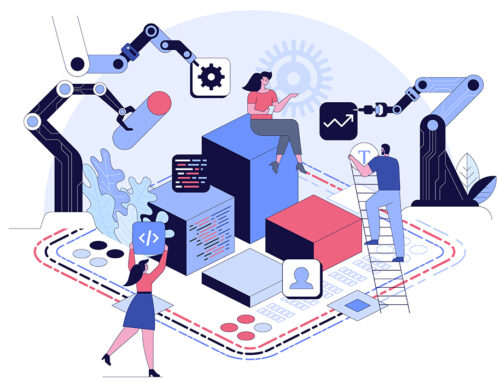As customer expectations shift toward guaranteed results, outcome-based field service contracts are gaining ground. But succeeding with them means rethinking relationships, risk, and culture.
Author Kris Oldland | Copperberg

Photo: Freepik
Ask most field service leaders what’s changed over the last five years, and you’ll hear about connected equipment, smarter diagnostics, and rising customer expectations. But beneath all that, something more fundamental is shifting.
Customers don’t just want responsive service. Increasingly, they want guaranteed results.
That expectation is driving a quiet but significant move away from activity-based contracts, where service is billed by the hour or the visit, towards outcome-based guarantees. And as Johann Diaz, Founder and Chief Strategy Officer at the Service Revolution Academy, puts it, “This isn’t a pricing tweak. It’s a different relationship altogether.”
Why the Old Model No Longer Fits
In traditional service models, success is defined by action: the number of tasks completed, site visits made, or hours logged. For decades, that was enough. It gave customers predictability, and providers a clear path to revenue.
But the landscape has changed. “Customers don’t care how many times your engineer showed up,” Diaz says. “They care whether the equipment’s running when it matters.”
It’s a shift that’s been coming for a while—accelerated by Everything-as-a-Service (XaaS) models and the rise of performance-based thinking in adjacent industries. In field service, it’s now creating a tension between how contracts are written and how value is actually experienced.
Outcome-Based Guarantees in Practice
An outcome-based contract flips the script. Instead of promising service activity, the provider commits to a result—say, 98% uptime or 4-hour recovery windows.
Diaz explains: “It’s not about promising effort anymore. It’s about committing to impact. And being ready to carry the risk if you fall short.”
In the UK, defence contractors have already moved this way. One provider restructured its agreements to focus on asset availability. They weren’t paid for repairs—they were paid for keeping systems operational. That meant fewer breakdowns, lower lifecycle costs, and more trust on both sides.
But not every implementation runs smooth. Diaz is quick to point out that contracts built on outcomes carry real complexity. “You have to define what success means. And make sure everyone agrees on how it’s measured.”
Why the Transition Stalls
Despite the appeal, many organisations hesitate. Some never get past the pilot phase. Others revert to old habits as soon as things get hard. And the reasons, Diaz says, aren’t just legal or financial.
- The Risk Is Real—But Hard to Allocate
Outcomes depend on more than the provider’s performance. Weather, user error, third-party equipment—all introduce uncertainty. Contracts need to be flexible enough to account for that, without becoming unworkable. - Measurement Isn’t Always Straightforward
Even well-intentioned providers struggle with this. What does “uptime” actually mean in a 24/7 environment? Are all failures equal? Whose data gets used? - Culture Gets in the Way
“You can’t deliver an outcome-based contract with input-based thinking,” Diaz says. Sales teams may still be focused on hitting quotas. Engineers might be measured by job completions, not performance over time. Bridging those gaps takes more than process—it takes mindset change.
What Leading Organisations Are Doing Differently
Some companies are making the shift—and making it stick. According to Diaz, the difference often comes down to how they start.
- They don’t try to convert everything at once. Pilots matter. So does learning from failure.
- They write contracts for clarity, not complexity. “If it takes a legal team to understand the SLA, it’s too complicated,” Diaz notes.
- They make data visible to both sides. Real-time dashboards shared with the client create transparency. That reduces disputes and makes collaboration easier when things go off-script.
- They align incentives. If a provider consistently exceeds performance targets, there should be upside. That alignment encourages innovation, not just compliance.
And perhaps most importantly, they invest in capability. Engineers learn to think like advisors. Salespeople sell outcomes, not headcount. That kind of shift doesn’t happen overnight, but without it, the model rarely works.
Outcomes Over Time: The Payoff
One telecoms provider Diaz worked with saw a 30% drop in service calls within six months of adopting an outcome-based contract. The engineers weren’t just fixing problems—they were preventing them. And the customer? More satisfied, more loyal, more open to strategic collaboration.
It’s not a magic bullet. Some contracts need tweaking. Some customers push back. But the trajectory is clear. “Where the model fits,” Diaz says, “the value isn’t just in margin—it’s in relevance. You stop being a vendor and start becoming part of the customer’s business.”
Final Thought: Not Just a Contract Shift – A Strategic One
There’s a reason outcome-based models feel harder to implement than they sound. They demand more coordination. More clarity. And a willingness to take on shared risk. But they also create room for deeper partnerships and longer-term value.
“If you’re still measuring field service by effort alone,” Diaz says, “you’re probably undervaluing your own impact—and missing what the customer actually cares about.”
Making the move isn’t about changing a clause in the SLA. It’s about changing what your business stands behind.






























